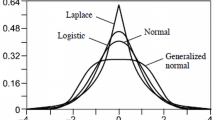Abstract
Security could be considered a measurable, objective state, but it is also an expression of a more or less present, highly individual sense of security. The fear that one’s own child will become a victim of crime increases when incidents become known in public. In connection with sexual violence, bodily injury and other crimes, this sometimes leads to unfounded fears, for example when the same crime is often discussed in the media. At this point it is helpful to inform oneself about which crime rates actually exist, whether certain criminal phenomena are tending to increase or decrease and whether statements in connection with crimes correspond to reality or rather represent a myth. This could, for example, involve the potential arming of perpetrators or the ratio between perpetrator and victim. In addition, terms such as bright field or dark field are explained.
Access this chapter
Tax calculation will be finalised at checkout
Purchases are for personal use only
Similar content being viewed by others
References
BKA. (2021). Polizeiliche Kriminalstatistik. Bundeskriminalamt.
Bley, R. (2018). Befragung zu Sicherheit und Kriminalität in Mecklenburg-Vorpommern. Abschlussbericht zur zweiten Befragung in 2018. FHöVPR M-V.
KFN. (2017). Befragung zu Sicherheit und Kriminalität. Kernbefunde der Dunkelfeldstudie 2017 des Landeskriminalamtes Schleswig-Holstein. KFN.
Liebl, K. (2013). Kriminalität, Kriminalitätserfassung und Fragen des Dunkelfeldes. Verlag für Polizeiwissenschaft.
Manstead, S. R., & Livingstone, A. G. (2014). Forschungsmethoden in der Sozialpsychologie. In K. Jonas, W. Stroebe, & M. Hewstone (Hrsg.), Sozialpsychologie. Springer.
Meyer, K. (1941). Das unbestrafte Verbrechen Eine Untersuchung über die sog. Dunkelziffer in der deutschen Kriminal-Statistik. Beck.
Oba, S. (1908). Unverbesserliche Verbrecher und ihre Behandlung. (Dissertation jur.).
Peter, E., & Bogerts, B. (2010). Sexueller Missbrauch. Neue Kriminalpolitik Forum für Praxis, Recht und Kriminalwissenschaften, 22, 45–51.
Schwind, H. D. (2011). Kriminologie (S. 38). Verlagsgruppe Hüthig, Jehle, Rehm.
Author information
Authors and Affiliations
Corresponding author
Editor information
Editors and Affiliations
Rights and permissions
Copyright information
© 2022 The Author(s), under exclusive license to Springer Fachmedien Wiesbaden GmbH, part of Springer Nature
About this chapter
Cite this chapter
Heimann, D. (2022). Statistical Considerations. In: Heimann, R., Fritzsche, J. (eds) Violence Prevention in Education, School, and Club. Springer, Wiesbaden. https://doi.org/10.1007/978-3-658-38551-4_2
Download citation
DOI: https://doi.org/10.1007/978-3-658-38551-4_2
Published:
Publisher Name: Springer, Wiesbaden
Print ISBN: 978-3-658-38550-7
Online ISBN: 978-3-658-38551-4
eBook Packages: Behavioral Science and PsychologyBehavioral Science and Psychology (R0)




